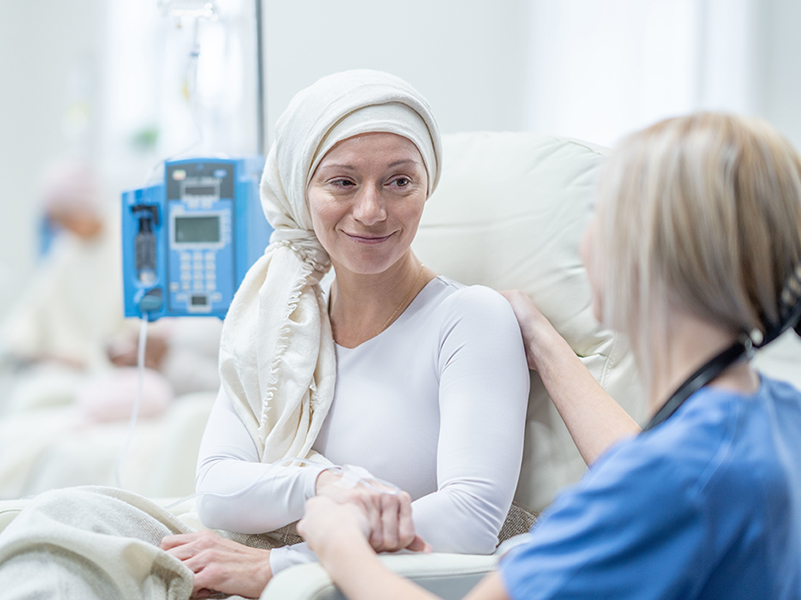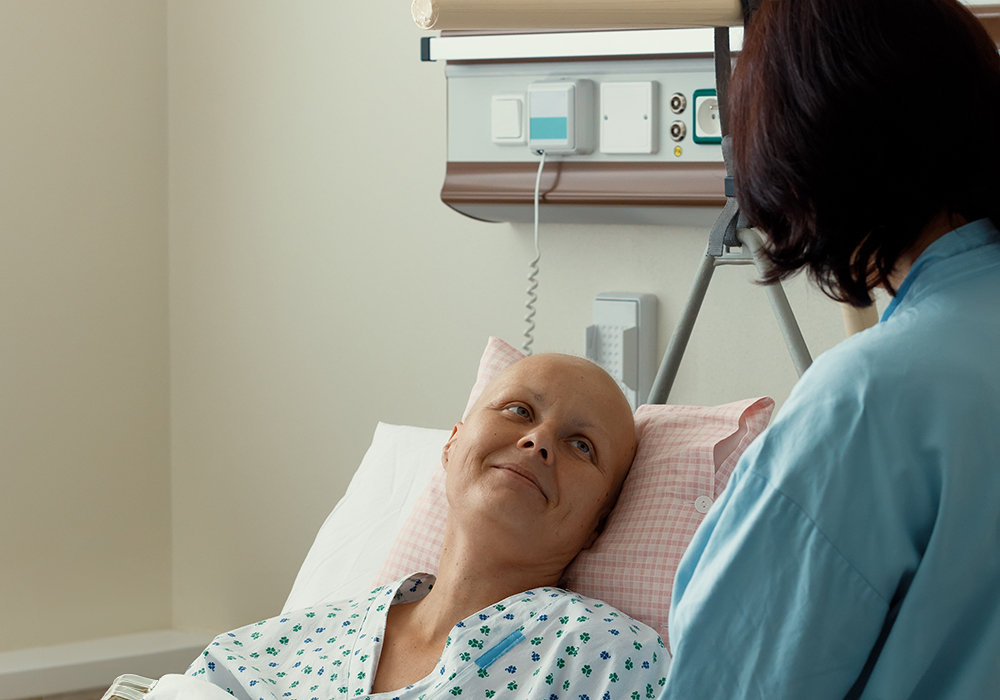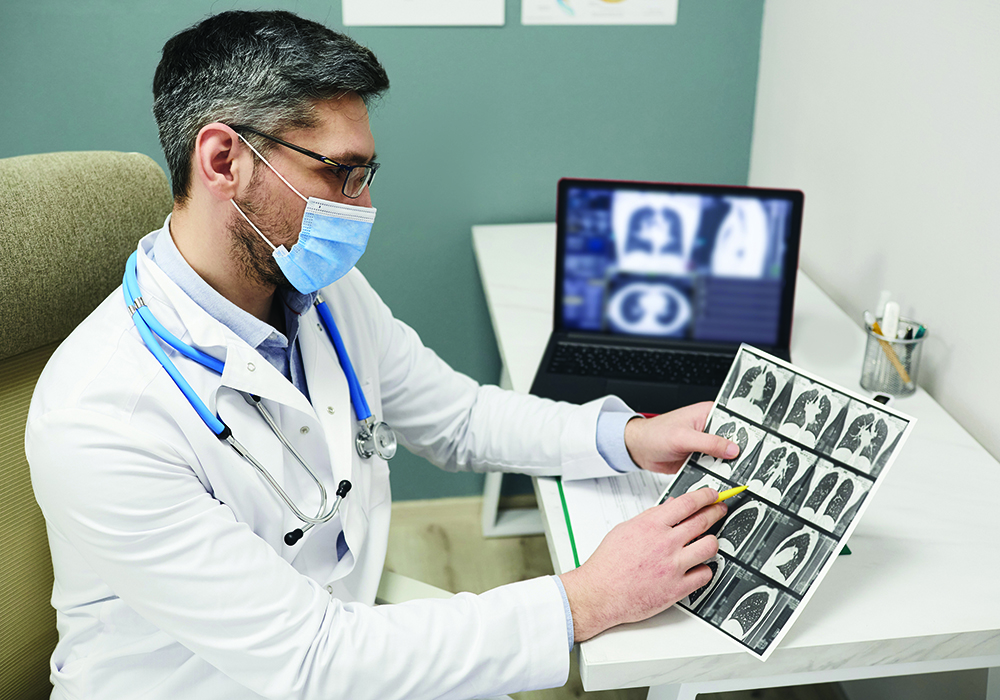This article was written in collaboration with Nancy Cruz-Sitner, MSN, RN, ANP-BC.
Benjamin, your 28-year-old patient with acute lymphoblastic leukemia, received a 10/10 matched, unrelated donor for his allogeneic hematopoietic stem cell transplantation (HSCT). Two months post-transplant, Benjamin developed grade 4 skin and gastrointestinal graft-versus-host disease (GVHD).
Today, two months after his GVHD diagnosis, Benjamin presents to your clinic with worsening conditions, despite completing the treatment of choice for severe GVHD, a regimen of high-dose steroids. He has tachypnea with a resting respiratory rate of 33, cough, oxygen saturation of 78% on room air, and a fever of 101.3°F. You conduct a physical exam and discover that Benjamin has severe difficulty breathing. He is using accessory muscles, and you hear diminished bilateral breath sounds. As the provider, you obtain a computed tomography chest scan that shows ground-glass opacities and patchy infiltrates in his left lower lobe.
What Would You Do?
HSCT is an established treatment for various malignant and nonmalignant conditions. A 10/10 match decreases a patient’s risk for GVHD but is not always a guarantee. Pulmonary complications, both infectious and noninfectious, occur in 25%–50% of HSCT recipients and are linked to a significant risk of morbidity and mortality.
Most complications are infections. However, recent advancements in broad-spectrum antimicrobial agents, prophylaxis, and treatment of infectious pulmonary conditions have decreased their frequency.
Noninfectious lung injury has emerged as a significant cause of morbidity and mortality. Early post-transplant noninfectious complications that may occur include pulmonary edema, diffuse alveolar hemorrhage, engraftment syndrome, and idiopathic pneumonia syndrome. Late post-transplant noninfectious pulmonary complications include bronchiolitis obliterans syndrome, which is the most challenging chronic pulmonary complication clinicians face as they care for allogeneic HSCT recipients.
Benjamin’s GVHD requires further work up and transfer to intensive care. Once he stabilizes, you suggest a bronchoscopy. His culture of protected aspiration and the lavage fluid culture was positive for Klebsiella pneumonia, and the infection was confirmed a few days later with blood and sputum cultures resulted. The care team diagnoses Benjamin with presumed bacterial pneumonia and treats him with IV antibiotics for 14 days.
In allogeneic HSCT, Klebsiella pneumoniae infections significantly contribute to an exceedingly high mortality rate, sometimes up to 60%. HSCT is associated with a significant risk of bacterial infection, especially with allogeneic transplants. The risk is highest during the preengraftment/neutropenic phase.
As the healthcare provider, you understand that patients like Benjamin do not have adequate neutrophils to fight infection during that phase. Therefore, the prophylactic, empirical, and targeted antibiotic regimen protocols are guided and driven by the identified organisms’ bacterial resistance. Patients who present with symptoms like Benjamin’s while on high-dose steroids and immunosuppressants should be evaluated carefully and receive prompt and appropriate infectious disease management, including antimicrobial therapy.
Benjamin’s recovery is long and tumultuous, but your early nursing interventions helped him obtain the higher level of care, appropriate imaging, and antibiotic administration that saved his life. After 11 days in intensive care, he is transferred back to the blood and marrow transplant unit. You closely follow Benjamin’s recovery and administer prolonged antibiotics to prevent further infections while he waits for neutrophil engraftment. Although lung complications in HSCT recipients are typically presumed infections, like in Benjamin’s case, clinicians must consider noninfectious sources of pulmonary complications to prevent detrimental outcomes.






